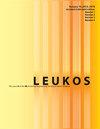色域大小的变化,以产生首选的颜色外观从20至15000勒克斯
IF 2.6
2区 工程技术
Q2 CONSTRUCTION & BUILDING TECHNOLOGY
引用次数: 11
摘要
光源显色如何影响颜色偏好,已经做了大量的研究。虽然亮度对颜色外观的影响(被称为亨特效应)在1952年被发现,但大多数调查光源下颜色偏好的研究只采用单一照度水平,照度水平通常在200到1000勒克斯之间。本文报告了两个心理物理实验,旨在研究光源颜色还原如何影响从20到15,000勒克斯的广泛照度水平的颜色偏好。在不同照度下,以3000 K的相关色温(CCT)对九种近异色光刺激下的艺术品颜色外观进行了比较。这些光刺激经过精心设计,具有不同的增强红绿色度的能力,因此它们具有不同的色域R g(实验1在100 - 124之间,实验2在99 - 117之间)。我们发现,光照水平显著影响观察者的判断,在较低的光照水平下,人们更倾向于选择R g较大的光刺激。rg大于100的光刺激在20到5000勒克斯的光水平下更受欢迎,而rg在100左右的光刺激在非常高的光水平下(即10,000和15,000勒克斯)更受欢迎。这表明,在过去的许多研究中发现,对rg超过100的刺激的偏好可能是由于与日光照度水平相比,相对较低的照度水平。此外,对优选刺激下艺术品颜色属性的计算表明,CIECAM02可能高估了光照水平对颜色外观的影响,尤其是在光照水平非常高的情况下,值得进一步研究。本文章由计算机程序翻译,如有差异,请以英文原文为准。
Change of Gamut Size for Producing Preferred Color Appearance from 20 to 15000 lux
ABSTRACT Numerous efforts have been made to investigate how light source color rendition affects color preference. Though the effect of light level on color appearance (known as the Hunt effect) was found in 1952, most studies investigating color preference under light sources only employed a single illuminance level and the illuminance levels were typically between 200 and 1000 lux. This article reports two psychophysical experiments that were designed to investigate how light source color rendition affected color preference across a wide range of illuminance levels, from 20 to 15,000 lux. The observers compared the color appearance of an artwork under nine nearly metameric light stimuli with a correlated color temperature (CCT) of 3000 K at different illuminance levels. These light stimuli were carefully designed to have different abilities to enhance the chroma of red and green colors, so that they had different gamut areas R g (between 100 and 124 in Experiment 1 and between 99 and 117 in Experiment 2). It was found that the illuminance level significantly affected the observers’ judgments, with a light stimulus with a greater R g being preferred at a lower light level. The light stimuli with an R g beyond 100 were preferred at the light levels from 20 to 5000 lux, whereas those with an R g around 100 were preferred at very high light levels (i.e., 10,000 and 15,000 lux). This suggested that the preference to the stimuli with an R g beyond 100, as found in many past studies, was likely due to the relatively lower illuminance levels in comparison to the daylight illuminance levels. In addition, the calculations of the color attributes of the artwork under the preferred stimuli suggested that CIECAM02 may overestimate the effect of light level on color appearance, especially when the light level was very high, which merits further investigations.
求助全文
通过发布文献求助,成功后即可免费获取论文全文。
去求助
来源期刊

Leukos
工程技术-光学
CiteScore
7.60
自引率
5.60%
发文量
19
审稿时长
>12 weeks
期刊介绍:
The Illuminating Engineering Society of North America and our publisher Taylor & Francis make every effort to ensure the accuracy of all the information (the "Content") contained in our publications. However, The Illuminating Engineering Society of North America and our publisher Taylor & Francis, our agents, and our licensors make no representations or warranties whatsoever as to the accuracy, completeness, or suitability for any purpose of the Content. Any opinions and views expressed in this publication are the opinions and views of the authors, and are not the views of or endorsed by The Illuminating Engineering Society of North America and our publisher Taylor & Francis. The accuracy of the Content should not be relied upon and should be independently verified with primary sources of information. The Illuminating Engineering Society of North America and our publisher Taylor & Francis shall not be liable for any losses, actions, claims, proceedings, demands, costs, expenses, damages, and other liabilities whatsoever or howsoever caused arising directly or indirectly in connection with, in relation to, or arising out of the use of the Content. Terms & Conditions of access and use can be found at http://www.tandfonline.com/page/terms-and-conditions .
 求助内容:
求助内容: 应助结果提醒方式:
应助结果提醒方式:


